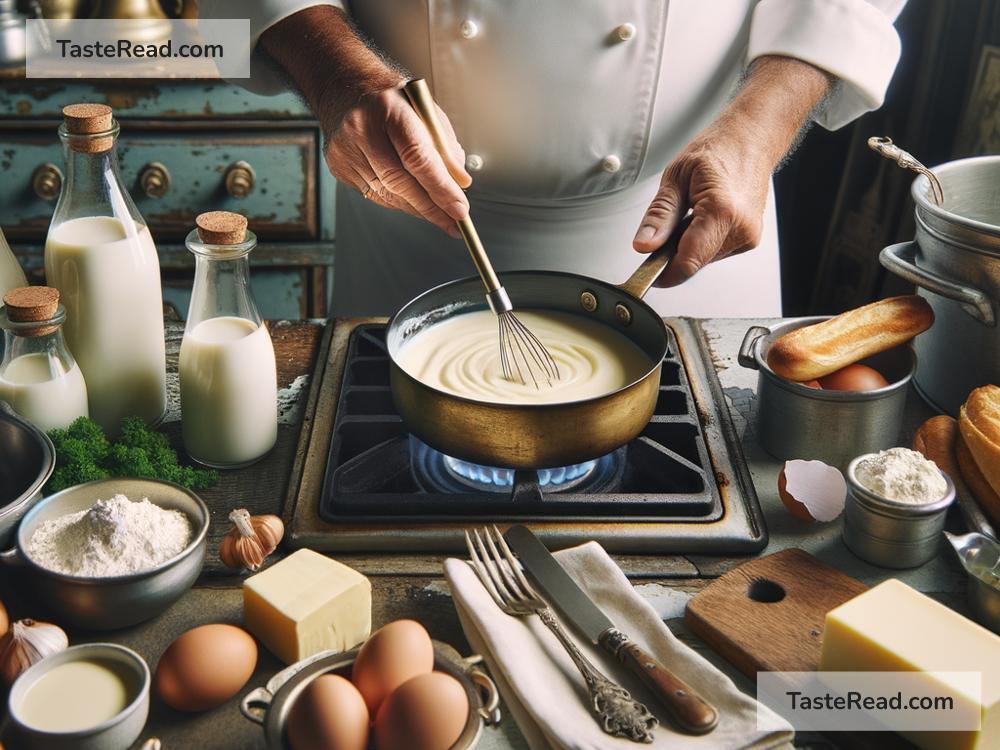The Origins of French Béchamel Sauce: A Delicious History
If you’ve ever enjoyed a creamy lasagna, a velvety cheese soufflé, or piping-hot mac and cheese, chances are you’ve tasted béchamel sauce. This silky, white sauce is one of the most famous culinary creations to come out of France. Known as one of the “mother sauces” of French cuisine, it serves as a foundation for countless recipes. But where did béchamel sauce come from, and how did it become such an iconic element in cooking? Let’s dive into the fascinating history of béchamel sauce and explore its origins.
What Is Béchamel Sauce?
Béchamel sauce is a simple yet luxurious mixture of butter, flour, and milk. The butter and flour are cooked together to create a roux (a thickening base), which is then whisked with warm milk until smooth. The result is a creamy, neutral sauce that forms the perfect canvas for adding flavors like cheese, herbs, or spices. It’s versatile and works wonderfully in pastas, casseroles, and other comforting dishes.
A Sauce with Ancient Roots
While béchamel sauce is considered French today, the idea of thickened sauces dates back thousands of years. Ancient Romans used flour and water to create similar mixtures, often adding cheese or flavoring for variety. Later, during the Renaissance period in Italy, chefs began refining sauce-making techniques, paving the way for more sophisticated recipes.
Many historians believe béchamel sauce has its early roots in Italy, where milk-based sauces were commonly prepared in noble households during the 14th and 15th centuries. Italian chefs at the time played a significant role in advancing European culinary traditions, and their influence would soon spread north – especially to France.
The Italian Connection
To understand how béchamel sauce became French, we need to look back at the 16th century when Italian Catherine de’ Medici married King Henry II of France. Catherine was passionate about food, and when she moved to France, she brought Italian chefs and cooking techniques with her. Among the ideas that traveled with her were milk-based sauces similar to béchamel.
By the 17th century, under the reign of Louis XIV, French cuisine began to flourish and evolve into a refined art form. Chefs in royal kitchens experimented with sauces, incorporating the Italian traditions brought by Catherine de’ Medici years earlier. These innovations eventually led to the creation of béchamel sauce, which would soon claim a permanent place in French cooking.
Why the Name “Béchamel”?
The sauce was named after Louis de Béchameil, a French financier and courtier who lived during the rule of King Louis XIV. Béchameil himself was not a chef, but he loved fine food and played an important role in popularizing elegant French cuisine. The story goes that one of the king’s chefs, François Pierre de La Varenne, refined an existing milk-based sauce and dedicated the recipe to Béchameil as a tribute.
La Varenne, considered a pioneer in French culinary history, helped establish many of the fundamental techniques and recipes we associate with French cooking today. He included instructions for béchamel sauce in his iconic cookbook Le Cuisinier François (The French Chef), published in 1651. This groundbreaking text laid the foundation for modern French cuisine and officially put béchamel sauce on the map.
From Royal Kitchens to Everyday Homes
In the centuries that followed, béchamel sauce became a staple of French cooking, earning its place as one of the five “mother sauces.” The concept of mother sauces was introduced by Auguste Escoffier, a legendary 19th-century French chef who reorganized and simplified sauce-making into categories. Béchamel joined espagnole (brown sauce), velouté (light stock-based sauce), tomato sauce, and hollandaise (egg-based sauce) in this important group.
The beauty of béchamel is its simplicity. Because it has a neutral flavor, it serves as a canvas for creating many other sauces and dishes. For example, add cheese to béchamel, and you have the base for Mornay sauce, famously used in dishes like croque monsieur (a classic French grilled ham and cheese sandwich). Or mix béchamel into lasagna for added creaminess and richness. Its versatility quickly made it indispensable for French chefs and home cooks alike.
Béchamel Sauce Today
Today, béchamel sauce is loved not only in France but all over the world. It forms the backbone of countless comfort foods, from cheesy casseroles to creamy pastas. It’s also remarkably easy to prepare at home—you only need three simple ingredients: butter, flour, and milk. The art lies in whisking everything together carefully to achieve that perfect silky texture.
Modern chefs have taken this humble sauce to exciting new places, adding herbs, spices, or alternative ingredients to fit diverse tastes and diets. Despite these creative spins, the essence of béchamel remains the same: simple, delicious, and endlessly versatile.
Conclusion
Béchamel sauce is a testament to how food history is shaped by culture, creativity, and refinement over time. While its roots may trace back to Italy and ancient culinary traditions, it blossomed into the beloved French sauce we know today thanks to centuries of influence, experimentation, and even the royal court. From its humble beginnings to its role as a cornerstone of global cooking, béchamel sauce has cemented its place in kitchens everywhere. So, next time you savor a creamy dish, remember the rich history that brought this delicious sauce to your plate—a sauce that has truly stood the test of time.


